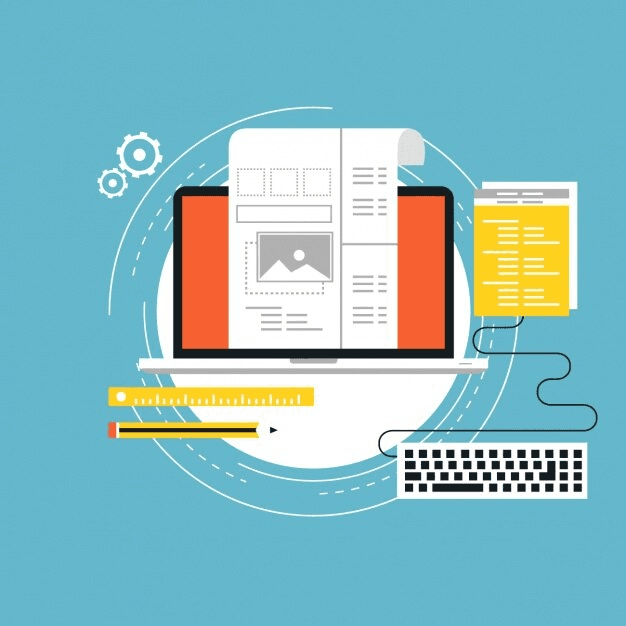Navigating the complexities of project management leads to confusion and misalignment among team members. In a fast-paced work environment, the lack of clarity can undermine accountability, making it difficult for teams to meet their objectives.
To counter these pitfalls, employing effective goal tracking tools becomes essential. By leveraging these resources, teams can enhance visibility, ensuring that everyone is aligned with their objectives and driving projects toward successful completion.
Defining Goals in Project Management
Setting clear and measurable goals is the cornerstone of successful project management. These goals serve as guiding stars for teams, providing direction and focus. By clearly defining what needs to be achieved, project managers can ensure that everyone is on the same page and working towards a common objective.
Common Challenges in Goal Tracking
Despite the importance of goal tracking, many teams encounter obstacles that hinder their ability to monitor progress effectively. Common challenges include ambiguity in goal definitions, lack of real-time updates, and difficulty in collaboration among team members. These challenges can lead to misalignment, scope creep, and ultimately project failure.
Key Features to Look for in Goal Tracking Tools
When selecting tools for goal tracking, it’s essential to identify features that enhance project visibility and team collaboration. Key functionalities to consider include:
-
Real-Time Progress Updates: Look for tools that provide live updates on goal progress, allowing teams to stay informed about current status.
-
Collaboration Features: Choose software that facilitates communication among team members, enabling easy sharing of updates, feedback, and ideas.
-
Reporting and Analytics: Effective tools should offer comprehensive reporting capabilities to analyze goal achievement and identify areas for improvement.
Overview of Tools for Goal Tracking
1. Pinrom
Pinrom is designed specifically for freelancers and small teams, simplifying project management with an intuitive interface that allows users to easily track goals and progress. It caters to individuals who often juggle multiple clients and projects without the support of a dedicated project manager.
Key Features:
-
Centralized Project Organization: All project-related files, information, and links are organized within individual projects, eliminating the chaos of scattered documents and communications.
-
Task Management System: Comprehensive features allow users to manage every aspect of their projects, track time, handle sub-tasks, and manage versions to ensure timely delivery.
-
Idea Board: A space to jot down creative thoughts, which can be revisited for collaborative refinement later, fostering creativity and innovation.
-
Wiki for Documentation: A central hub for all project knowledge that facilitates easy collaboration on content and quick access to vital information.
-
Client Portal: Enhances collaboration with clients by centralizing communication and providing them with real-time access to project progress, updates, and files.
With its user-friendly design and essential functionalities, Pinrom empowers freelancers to manage their projects effectively, ensuring that goals are not only set but tracked and achieved.
2. Trello
Trello is a visual project management tool that organizes tasks into boards, lists, and cards. It is particularly favored for its simplicity and flexibility, making it an excellent choice for teams looking to visualize their goals.
Key Features:
-
Visual Organization: Users can create boards for different projects and use cards to represent tasks, allowing for a clear overview of project status.
-
Drag-and-Drop Functionality: Easily move tasks between different lists (e.g., from “To Do” to “In Progress”), enabling a straightforward visual representation of progress.
-
Customizable Workflows: Teams can tailor their boards to fit their specific processes, adding checklists, due dates, and attachments as needed.
-
Integration Capabilities: Trello integrates with numerous third-party applications, enhancing its functionality and allowing teams to work within their preferred ecosystems.
Trello’s visual approach makes it easy for teams to track their goals and collaborate effectively, making it a favored choice among creative professionals and teams.
3. Asana
Asana is a comprehensive project management platform that offers robust goal-setting and tracking capabilities. It’s designed for teams that need to manage complex projects and ensure that all team members are aligned with their goals.
Key Features:
-
Task Hierarchy: Allows teams to break down large projects into smaller, manageable tasks, assigning due dates and responsibilities to enhance accountability.
-
Goal Tracking: Users can set specific goals within projects, tracking progress through visual charts and status updates.
-
Timeline View: A visual representation of project timelines that helps teams plan and adjust their schedules accordingly.
-
Reporting Tools: Advanced reporting features enable teams to analyze performance metrics and track the achievement of their goals over time.
Asana’s structured approach to project management helps teams maintain focus and ensure that their goals are met efficiently.
4. ClickUp
ClickUp is a highly customizable project management software that supports diverse project requirements, making it suitable for teams of all sizes. Its flexibility allows users to tailor the tool to their specific goal-tracking needs.
Key Features:
-
Custom Fields and Views: Users can create custom fields to track specific metrics and choose from various views (list, board, calendar) to visualize their projects.
-
Task Dependencies: This feature helps teams understand the order of tasks and manage their workload effectively, ensuring that critical tasks are prioritized.
-
Goal Tracking Features: ClickUp allows users to set goals at both the team and individual levels, tracking progress and celebrating milestones.
-
Integration with Other Tools: ClickUp integrates with a wide range of applications, enhancing its utility and allowing seamless workflows across platforms.
With its extensive customization options, ClickUp is a powerful tool for teams looking to track their goals in a way that fits their unique processes.
5. Wrike
Wrike focuses on collaboration and provides advanced tracking and reporting features, making it easier for teams to monitor their progress and stay aligned with project goals.
Key Features:
-
Real-Time Collaboration: Team members can communicate directly within tasks, providing feedback and updates that enhance collaboration.
-
Time Tracking: Wrike includes built-in time tracking features that allow teams to log hours spent on tasks, ensuring accurate billing and performance monitoring.
-
Customizable Dashboards: Users can create dashboards tailored to their specific needs, providing visibility into key metrics and project statuses.
-
Robust Reporting Capabilities: Detailed reporting tools enable teams to analyze project performance, track goal achievement, and make data-driven decisions.
Wrike’s focus on collaboration and reporting makes it an ideal tool for teams looking to enhance their goal-tracking and project management capabilities.
How to Implement Goal-Tracking Tools in Projects
Integrating goal-tracking tools into existing workflows can significantly enhance project management efficiency. Start by evaluating your team’s specific needs and selecting a tool that aligns with those requirements.
Once chosen, provide training for team members to ensure they understand how to utilize the software effectively. Gradually implement the tool into your workflow, allowing time for adjustment and feedback to optimize its use.
Aligning Team Goals with Organizational Objectives
For project goals to be truly effective, they must align with broader organizational objectives. Regularly communicate with stakeholders to ensure that team goals reflect the company’s mission and vision. This alignment fosters a sense of purpose and direction, motivating team members to achieve their targets.
Real-Time Monitoring and Reporting
The importance of real-time updates in project management cannot be overstated. Tools that provide live progress tracking allow teams to make informed decisions and adjustments as needed. This immediate visibility into project status enhances accountability and ensures that all team members remain focused on their goals.
Also read: Measuring Success: Key Performance Indicators for Project Goals
Utilizing Feedback for Goal Refinement
Feedback is an essential component of successful goal tracking. Encourage team members to provide input on their progress and any challenges they encounter. This feedback can then be used to refine goals, making them more achievable and relevant. Utilizing project management tools to streamline this feedback process can lead to improved project outcomes.
Case Studies: Success Stories Using Goal Tracking Tools
Many teams have experienced success through the effective use of goal-tracking tools. For instance, a marketing team that implemented a visual project management tool found that their ability to monitor campaign progress improved significantly. This increased visibility led to timely adjustments, resulting in enhanced campaign performance and client satisfaction.
Evaluating Tool Effectiveness
To assess the impact of goal-tracking tools on project success, establish key performance indicators (KPIs) that align with your project objectives. Regularly review these metrics to gauge whether the tools are helping the team meet its goals. If not, consider re-evaluating the tool or its implementation strategy.
Accountability Mechanisms
Fostering accountability within the team is crucial for successful project management. Tools that allow for transparent goal tracking encourage team members to take ownership of their tasks and responsibilities. By establishing clear roles and deadlines, project managers can enhance accountability and drive project success.
Insights from Freelancers
Gathering insights from team members regarding their preferences for goal-tracking features leads to more effective tool selection. Conduct surveys or informal discussions to understand what functionalities would best support their workflow and enhance productivity.
Visualizing Goals for Enhanced Productivity
Visualization is a powerful tool in project management. Utilizing software that allows for visual goal tracking helps team members stay focused and motivated. Whether through graphs, charts, or visual boards, seeing progress inspires teams to maintain momentum toward achieving their objectives.
Also read: Effective Project Planning: Tips and Best Practices
Conclusion
Incorporating the right tools for goal tracking is essential for effective project management. By utilizing specialized software, teams can streamline their processes, enhance collaboration, and achieve their goals more efficiently.
Embracing these tools not only improves project outcomes but also fosters a culture of accountability and continuous improvement within teams.
Among these solutions, Pinrom stands out as an extremely affordable option at just $1 per user, making it accessible for freelancers and small teams looking to elevate their project management capabilities.
Explore various project management solutions to find the right tools for your goal-tracking needs, and take your project management capabilities to the next level.





